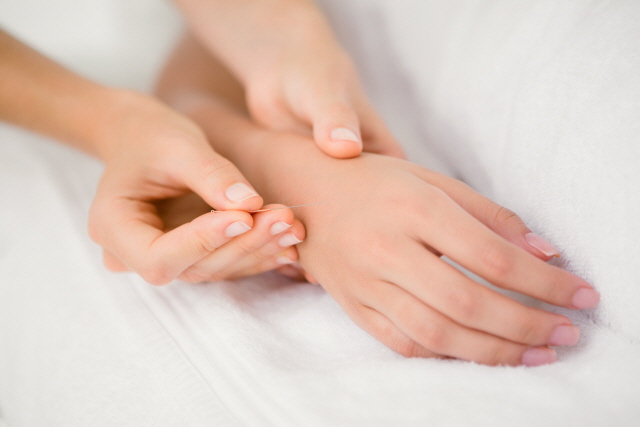Large Intestine Meridian Treats Skin Disease, Losing Weight, and Pain
By Namwook Cho L.Ac
Large intestine (Li) sedation (tonify LI5 and Si5, sedate Li2 and BL66), a rare technique in clinical practice, will be briefly explained.
Li Sedation is particularly effective when dealing with shoulder pain along the Li meridian pathway. A comparison of pulse sizes on the right cun can help determine its potential applicability. If the pulse of the large intestine is stronger than that of the lung meridian, I insert Li2 and sedate to test the effectiveness of Li Sedation.
Here are the cases in which Li sedation could applied:
Acute otitis media, Insomnia, Joints are stiff and painful, Urinate frequently, Shoulder pain that is severe only at night and lessens during the day, Diarrhea containing pus.
Continuing from the previous issue, we will examine the characteristics of the Li meridian to gain an in-depth understanding of skin diseases.
Large Intestine and Various Skin Diseases
Li, which has an internal-external relationship with the lungs, is also often used for treating dermatological diseases. The properties of Li Meridian are easy to understand if you think of it as a metal jar filled with something like silica gel in a dry bowl. It is a harder vessel containing a material that is hard and absorbs moisture well. In this way, water is absorbed from the dry large intestine. When this dry energy is accessed, it causes constipation, and when it weakens, it causes diarrhea. This understanding can shed light on the role of the Li Meridian in treating skin diseases.
The Li meridian, crucial in controlling weight and dampness, is a key focus in acupuncture treatment. A thin body indicates a hyper-stage to Yang Ming’s energy, while a fat body suggests a lack of it. This understanding can guide us in using the Li Tonifying formula to strengthen Li’s energy and absorb more dampness.
The representative organ that regulates dampness in the body is the Spleen (Sp). Li also plays an important role in drying up moisture or dampness. To yield the best treatment effects, we must decide which meridian should be used for applying Saam Acupuncture.
It is effective to use the Sp sedation formula and LI Tonifying formula, which will be studied later, at the same time. However, suppose you want to make a more accurate diagnosis and provide accurate treatment. In that case, you need to accurately understand the properties of LI, which is the yang meridian, and Sp, which is the yin meridian.
Different Qi Movements in Yin and Yang Meridians
In every yang meridian, the moving energy moves from the head to the feet, and in the yin meridian, it moves from the feet to the head. For example, LI belongs to the yang meridian, and physiology is that qi should start moving from the head, descending and cooling down and then finally enter the large intestine. On the other hand, the physiology of the Sp meridian is to transmit warm energy to the Spleen as it moves up from the feet.
When the yang meridian becomes pathological, symptoms of heat accumulating in the head are generally present. As energy does not flow down from the head properly, it builds up and generates heat, which makes it difficult to deal with dampness well. Li’s energy, metal, hates heat and water, which accelerates oxidation. This is the same reason that iron, once red-hot, rust more easily. When applied to symptoms in the human body, it is similar to the symptoms of swelling or flakes in the head with fever. Also, the face turns red due to the heat from the cumulated heat in the head.
The pathology of the Sp meridian is a symptom that occurs when warm energy cannot rise to the upper part of the body and delivers heat to the Spleen. So people who have a pale face and fat complexion, heavy arms and legs, continuously want to lie down and do not have the strength to exercise belong to this condition. To treat such a person, you can use Sp sedation.
I once treated a patient whose entire body was red and had a fever. When I looked at his skin, I felt accessive heat and discharge coming out of it. First, I used the Li tonifying formula to get rid of the ooze. I dried the ooze for a bit, but hives formed on my patient’s skin, and itchy symptoms appeared. After using the Si tonifying formula, the itchiness decreased, and the hives began to disappear.
Therefore, when treating patients complaining of skin diseases, Li tonifying or Li sedation formula is basically considered first. In particular, if the skin has become hard and dry due to a skin disease, first needling Li tonifying formula and see how the patient’s body reacts.

































